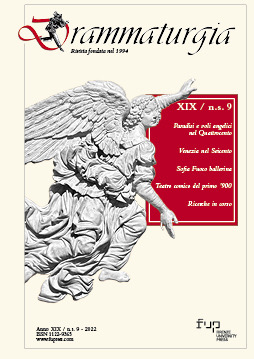Published 2022-12-15
Keywords
- Florence,
- mystery plays,
- staging machinery,
- heaven,
- Filippo Brunelleschi
- Leonardo da Vinci,
- Milan,
- Ferrara ...More
How to Cite
Abstract
At the beginning of the 15th century, stage machines were developed in Florence to set up the mysteries of the Annunciation, Ascension and Pentecost in some churches of the city. The architect-engineer Filippo Brunelleschi, according to Giorgio Vasari, perfected the structure. These apparatuses represented heaven in three dimensions, with God the Father and his angels personified by live singers and musicians who hovered in the air in a whirlwind of dances of lights and sounds. The aim of this essay is to show, on the one hand, that the function of these apparatuses was to offer the faithful an imaginary of heaven, inspired by the model of Dante’s Comedy, which they had never seen before in the pictorial representations widespread in places of worship; and, on the other hand, that the image of heaven as a place of delight, light and infinite joy was intended to directly stimulate the emotional sensitivity of believers, encouraging them to behave as good Christians in order to enter it after death. In addition to the emotional impact aroused on the public by these stage sets, is taken into consideration the visual and kinetic suggestion that this new representation of heaven exerted on artists, both Florentine and non-Florentine, irreversibly influencing their figurative lexicon, as evidenced by the numerous iconographic sources examined. Finally, some examples of reworking of Brunelleschi’s machines in non-Florentine contexts and for themes other than religious ones are analysed, as in the case of the Feast of Paradise, created in Milan by Leonardo da Vinci in 1490, and in various representations, sacred and profane, set up in Ferrara between the end of the 15th century and the first years of the 16th century.


